Slipping Into Spring
Header Image: Clouds In The Marsh
“Should I wear my sweatshirt?”
It’s that time of year here in sub-tropical central Florida. Important fashion decisions are made difficult by seasonal ambiguities. Yesterday, it was humid and at sunrise it was a pleasant 70 F/21 C. Today, it is somewhat chilly at 50 F/10 C. Will it warm up quickly? What will the wind be like? Wear the sweatshirt or just throw it in the car in case it’s needed?
See what I mean? How are we supposed to cope with these incredibly harsh conditions? Sigh. The life of nature explorers is one challenge after another.
The winter doldrums are rapidly yielding to Nature’s annual renewal. Bright green leaves are clothing the bare limbs of hardwood trees, new growth is forming “candles” at the ends of pine tree branches, wildflowers are peeking above the brown detritus under foot, bird migration is in full swing, resident birds are selecting mates, insects are beginning to fill the air – what a wonderful time to be outdoors!
Our morning was filled with discovery! This might be the last views we have of some of our migrants until next fall. The year’s first wildflower blooms are like opening a present each year. A butterfly which will be commonplace in a few weeks, today causes us to chase it through brambles and mud hoping for a photograph. The sky is too blue. It will cause me to “desaturate” it during processing the images else face accusations of “photoshop”!
Wish you had been with us to share the experience.
Here, take a look.
Soon now, this Yellow-bellied Sapsucker will wing its way northward. They breed in the northernmost part of the U.S. and in Canada.

A few weeks prior to hitting the air corridors, Gray Catbirds form groups of up to a couple dozen birds. Safety in numbers, perhaps? This one was with six birds feeding on the fruit of Brazilian Pepper (Schinus terebinthifolia).
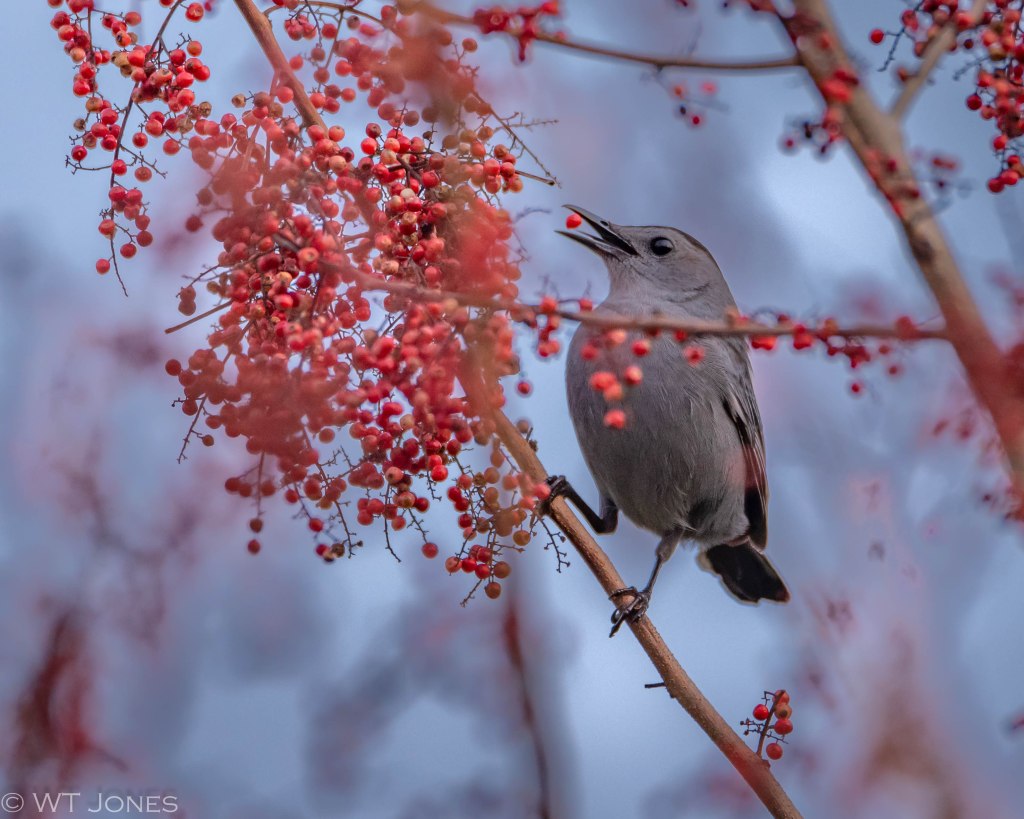
Only three sparrow species (four if you count the old world House Sparrow) breed in Florida so this Swamp Sparrow is another visitor we’ll soon be bidding farewell.
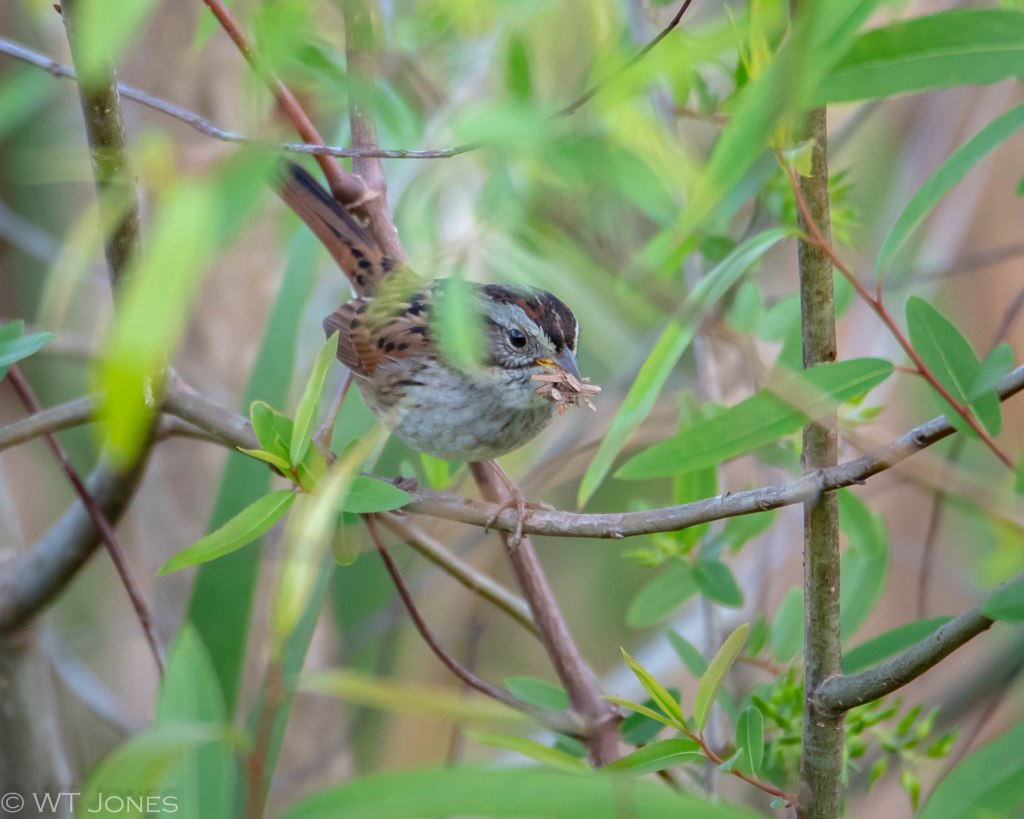
American White Pelicans can be found in our area in small numbers year around. During the winter, large groups (over a thousand in some years) will settle in to roost around some of our many lakes.
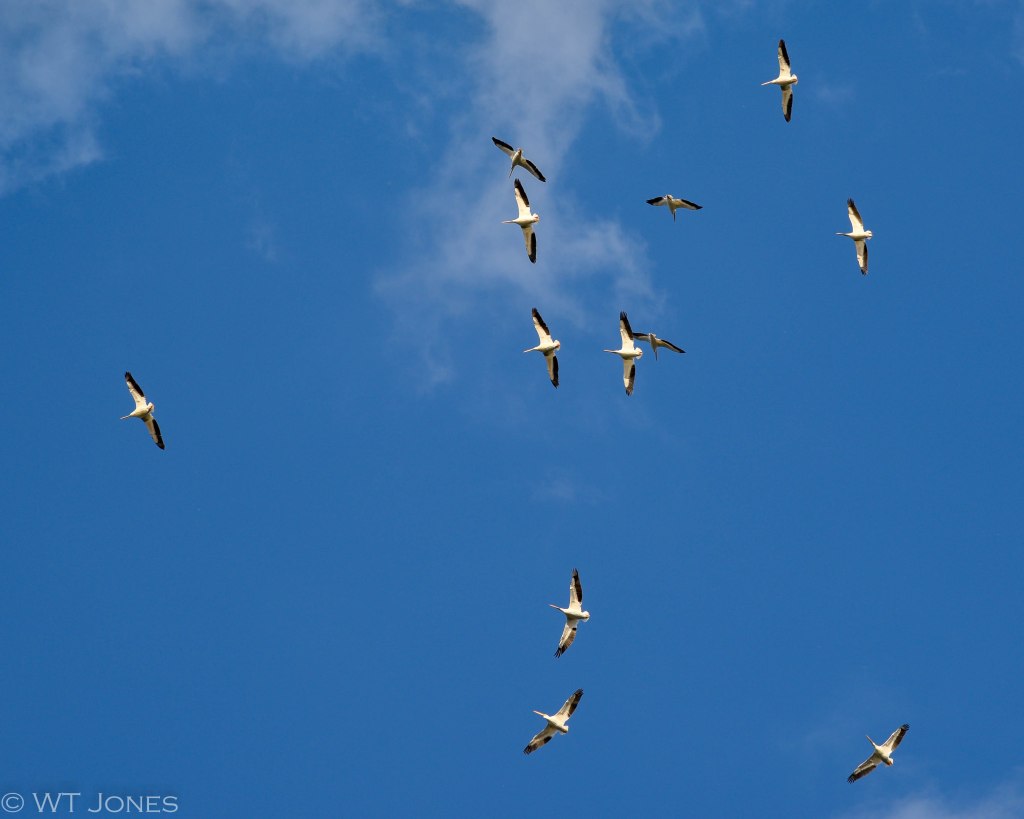
A couple of years ago, this oak tree was felled by a wind storm. I like the appearance of the branches reaching outward as one approaches.

Rosary Pea (Abrus precatorius) is a vine which has an attractive green fern-like foliage and bright red and black seeds within a brown pod. It’s an invasive plant introduced from Asia. Be careful around this one as it produces a toxin called Abrin. Studies have shown that as little as 0.00015% of toxin per body weight will cause fatality in humans (a single seed). Birds and other wildlife are not affected by the toxin, so they happily disperse the plant wherever they go. (Oh, and fire helps spread the plant, too.)

As the first rains of the year begin to rake across the state, one of the first blooms we encounter is the attractive Rain Lily. In central Florida, the most common species is the Atamasco Lily (Zephyranthes atamasca). There is a lot of discussion about various species, scientific names, common names, etc. but I just like the beauty of the plant! (So, three taxonomists discussed going to a bar/pub/ale house/saloon/taproom – but just went home instead.)



With singing skills which rival any Mockingbird, a Brown Thrasher will soon be building a nest. They are very aggressive in the Spring and that large curved beak can be quite a weapon.
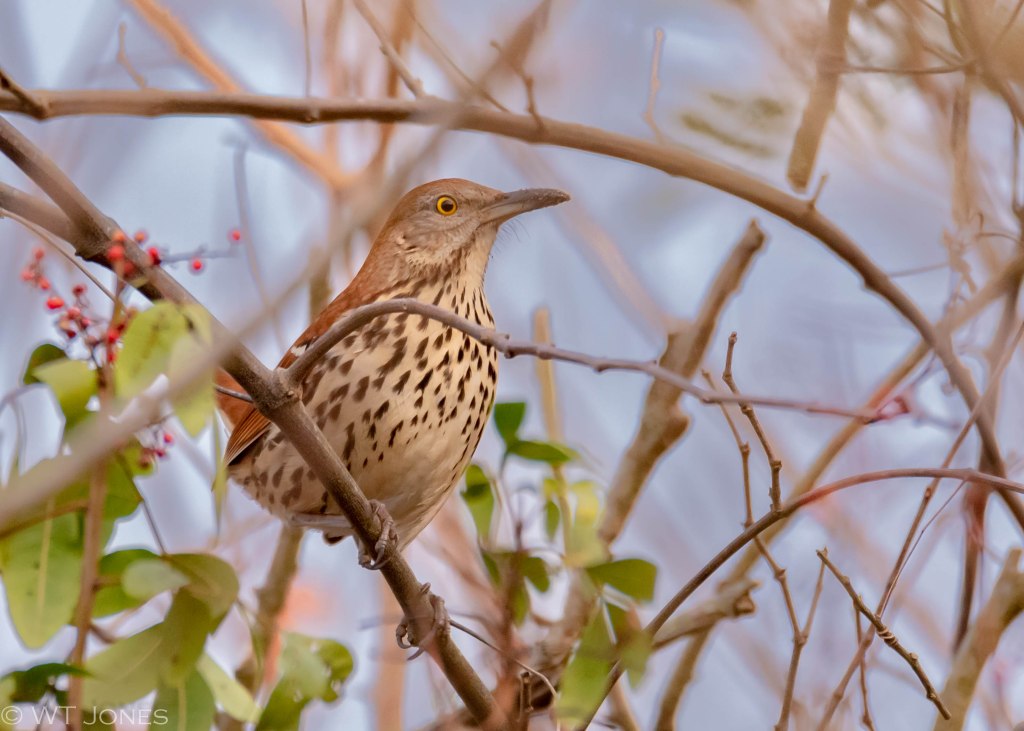
Pine Warblers breed in our area but during the winter we see hundreds of these colorful birds throughout the forests. In a few weeks, only resident birds will remain and they will be scurrying to complete nest building and begin producing more beautiful warblers.
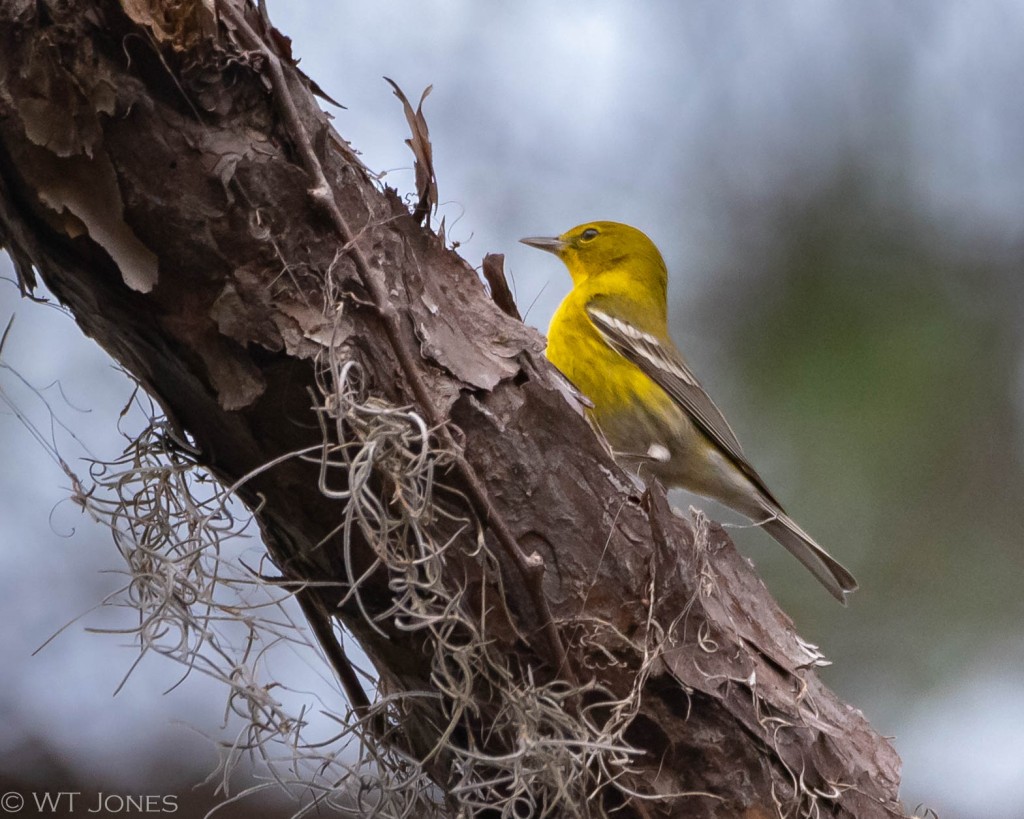
Singing incessantly from low in the bushes, White-eyed Vireos are quick to hop out when we approach. They try to figure out if we’re a threat and then they disappear. They don’t go far, though, as they immediately start their singing again.
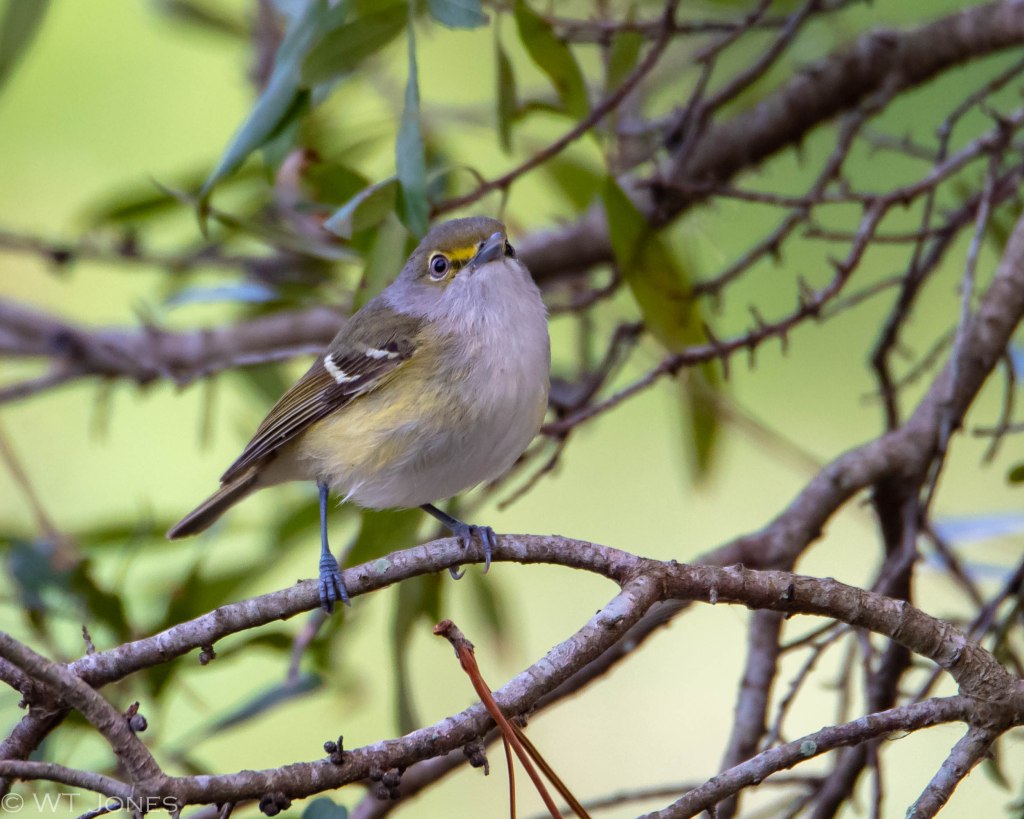
Small, sleek Blue-gray Gnatcatchers seem to never stop in their quest for one more bug. Their large eyes scan every millimeter of branches and leaves. These nervous hunters are also residents in this area.

Where there is water and reeds there are Common Yellowthroats. The masked males will soon begin singing “witchety-witchety-witchety” non-stop until a female decides he’s the one.
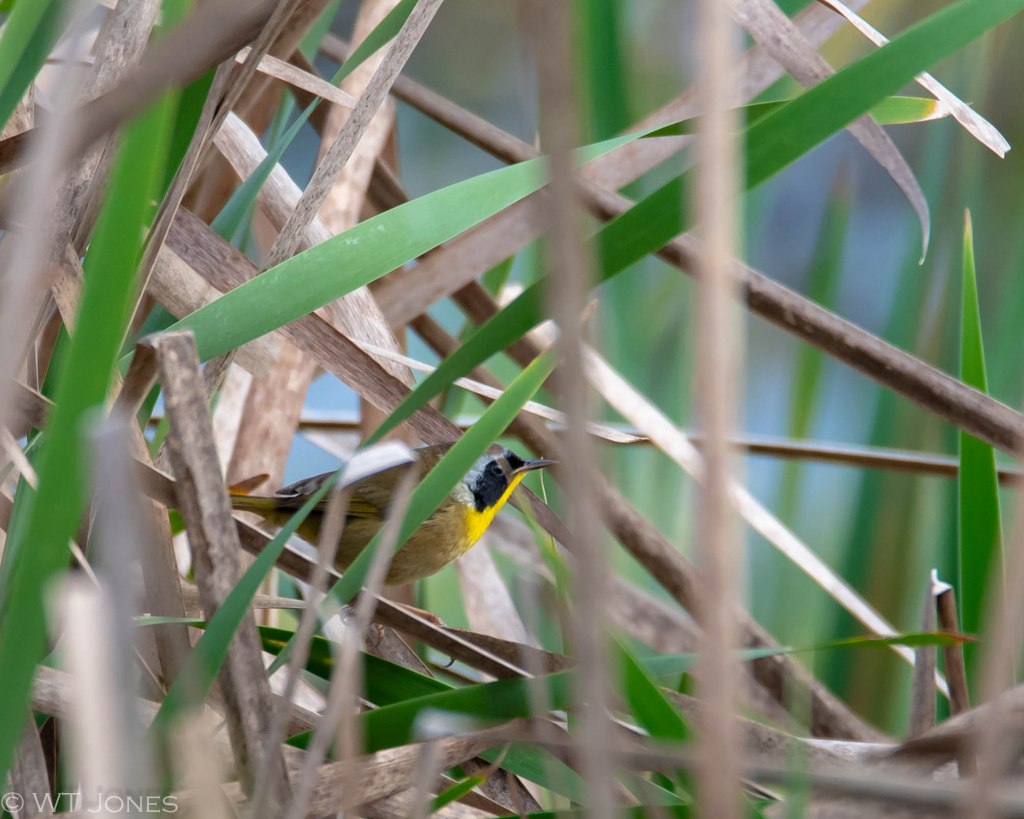
Bugs! In addition to slapping the first mosquitoes of the year, we are seeing early dragonflies, damselflies and butterflies. This Dorantes Longtail (Urbanus dorantes) posed in the sunshine briefly and we look forward to more insect investigation in the coming weeks.
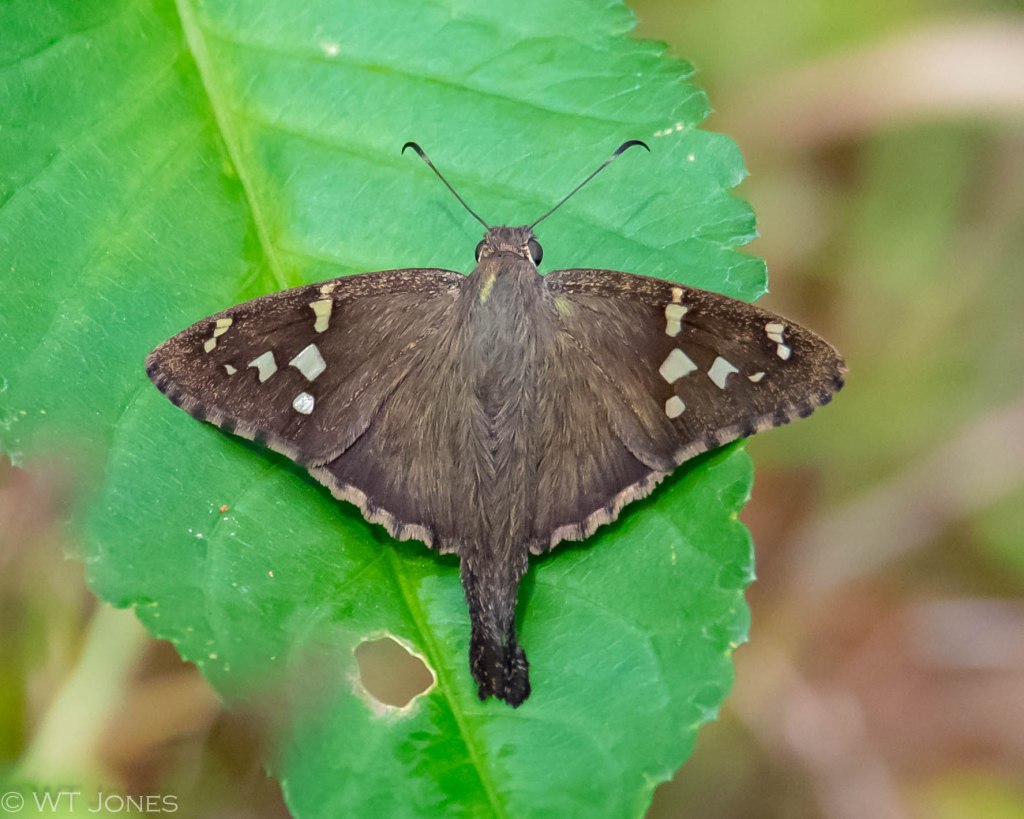
The Cypress Trees in this bog have yet to begin sprouting new foliage and this scene looks wintry, despite a bright sun breaking through the dimness.

We crossed the edge of Winter into the bright light of a new Spring. Each day is a glorious gift which we hope to use to live our best life. Our hope is for each of you to do the same.
Enjoy your search for a natural place and come back for a visit!
To this no longer shivering resident of the northeast, it is indeed warming to see your early blooming flowers and the lovely singers who will soon arrive. We’ve our annual returning contingent of early birds…robins, grackles, cowbirds, starlings, turkey vultures and even some great blues nesting up so seeing the smaller songbirds fattening up for the trek up this way is further encouragement.
I bet some kids may have stories about that old oak reaching out to grab them. It does look like it wants to be friends.
If any consolation, we have the same clothing dilemma here lately. Days in the 50’s and 60’s followed by highs in the 30’s. Yankee hubris says “if you don’t like New England weather, wait a minute” but it’s that way in most climes.
LikeLike
Thank you, Steve, for you kind remarks.
Further encouragement for you. Yesterday we encountered over 200 Cedar Waxwings gorging on berries in our local birding patch. Soon, they should be winging northward.
We’re trying to enjoy these coolish mornings as much as possible as we know pretty soon we will be lucky to see anything below 70 at sunrise. Not to mention the “slight increase” in humidity.
LikeLiked by 1 person
Looking forward to the Cedar Waxwings once they arrive. I see and hear them often in the location where I go afroggin’. If we are lucky during the winter we see Bohemian Waxwings. Occasionally we have a nice irruption.
Your summer weather is oppressive and makes ours seem comfy. I have friends in AZ who, when I complain about having days in the 90’s, post their local forecast with lows above our highs.
LikeLiked by 1 person
I read the first part out loud to my hubby and we had a laugh. I’m always asking him what he’s going to wear! And should we wear long sleeves or short sleeves. We’ve had such cold mornings this winter that it gives us that cool start but then it warms up! I know…..we really have it rough here in Florida! Long sleeves (to roll up) or short sleeves! lol I love seeing the birds you’ve seen this week. I don’t think we have the Brazilian pepper here but we do have some plants with red berries. And we have a blue Iris blooming in the edge of the Rainbow River that’s pretty. I love your photo of the Cypress trees too. Enjoy your week! Keep that sweatshirt handy! Diane
LikeLike
My really thin native Floridian blood dictates that I carry a sweatshirt most mornings! I’m such a fragile thing. 🙂
We’ve really been enjoying your hikes, Diane. Thank you so much for sharing the beautiful things you see.
LikeLike
As always, Wally, you present us with a great header image, entertaining and informative narrative, and a super array of supporting images – which I have found to be particularly excellent in this post. I am, however, going to declare a couple of favourites – being the Sapsucker (fabulous shot) and the Longtail (so unusual in form).
We’re both a bit upside down at the moment with a succession of hospital visits, and domestic projects to be completed. Hoping to get back on stream soon. I hope that you both are continuing to fare well..
LikeLike
Thank you very much, Richard, for your very kind remarks. We really appreciate your taking the time to visit and make us feel good!
Gini and I looked at the calendar for next week and were amazed to discover that we had NO medical appointments scheduled! That hasn’t happened in a while. We shall attempt to take full advantage and go exploring in our favorite swampy forest!
We hope you and Lindsay navigate the hospital visits with little difficulty. I would volunteer to help with your domestic projects but that would be unkind as I would very likely set your progress back by several weeks.
Yes, we are both faring exceedingly well!
A new week beckons …
LikeLike
I am very happy to see those migrants moving north, Wally. We have laid out the welcome mat for them, as we do every year, and they always seem to appreciate it. Many have already arrived – the early, hardy species – and each week will see more arrive. Great time of the year.
LikeLike
I know these little feathered travelers will appreciate your warm Canadian hospitality!
Still, we are sad to see them go. We’ll try to wait patiently until autumn.
LikeLike
Lookie there! Urbanus dorantes! Some Florida dude helped me identify that same species, though I found mine in Texas. I thought our White Pelicans were gone, but I noticed some of them still on their bayside perch this afternoon. It won’t be long before they’ll be gone; I always love catching groups of them circling high in the sky. Sometimes I imagine they’re trying to decide whether it’s really time to go.
You always offer up a surprise. I had no idea that Brown Thrashers are singers, too. In the first photo of your lily, in the upper right quadrant at the edge of the petals, there’s a little plant that looks rather like a cluster of Jack-in-the-Pulpit berries, although it surely is something else. Do you know what it is?
LikeLike
It is a joy to watch pelicans soaring like little clouds. They seem so non-aerodynamic that I’m always fascinated they can fly at all.
Many assume they are hearing a Mockingbird imitating all those bird songs he hears, when in fact, the Brown Thrasher may be the actual artist. One study noted over 1,000 different songs in its repertoire!
The setting where we found these Rain Lilies doesn’t seem a likely habitat for Jack-In-The-Pulpit, but I have no idea what the seeds might be. Good eyes.
LikeLike
Beat you two cool dudes. This week it’s sunny and warm her at 14/15 degrees Fahrenheit today and more to come even though it’s close to freezing at 6am when I get up on Saturday for a drive to our ringing site at Sand Villa Farm.
Like you say, it’s a wonderful time to be outdoors and to wait for the unexpected to turn up.
I wonder if a non-birder saw your photo of the sapsucker and exclaimed “Hey, that picture is upside down”. “Why didn’t the guy show it right way up?”
Your Cypress trees look very spooky, as if they belong in a horror movie. And I’m sorry that so many of your winter visitors will be leaving soon, just as we in the Frozen North await Africa.
Take care with those berries. Yet another hazard of Florida life. I think you and Gini should move to UK Lancashire, no alligators and our weather is better than your own.
LikeLike
As jealous as we are about your enticing weather (“close to freezing at 6 am”), Gini advises that, for now, we’ll try to tough it out here in the tropics.
I love watching birds scour the underside of branches for a snack. Keep hoping the world of outdoor photography will notice and proclaim: “He’s turned bird photography on its head!”
We shall return soon to that Cypress bog so you can see what the spooky trees look like in their new green cloaks. Of course, the bog itself will still be spooky. Who knows what lurks beneath the surface of that dark water?
There are much worse ways to go than “berry overdose”, so we’ll continue to take our chances.
All here is fantastic. We continue to ignore current events of the world and our days are happier for it.
LikeLike
Thanks for sharing this lively and lovely spring walk.
LikeLike
Any time!
LikeLike
Blimey it was just like Florida here yesterday, 20c! Back to single figures next week 🙄😥 I knew it was too good to be true.
Love that Longtail, strange how we seem fixated in photographing ‘common’ butterflies, dragonflies or whatever early in the season, must be our reaction to getting rid of the shackles of winter.
The Catbird image is very appealing, my favourite of this fine collection.
LikeLike
Thank you, Brian.
In my case, I am fixated on snapping what I can get to hold still in front of the lens. Naturally, the more common subjects are – well – more common!
Hope your Florida-like temps return soon.
LikeLike
I wish I could have been with you too. I suspect that I could even cope with your climate in Spring – and the birds and the critters would NEVER go astray.
LikeLike
We’ll reserve some of these cool, drier mornings for you, EC!
I like the sound of your control over the wildlife!
LikeLike
Of the birds you describe, catbirds, brown thrashers, gnatcatchers, yellowthroats, and white pelicans might also show up here in Colorado. Most of our migrants haven’t yet started to arrive, but I look forward to the next couple of months when they should make their appearance.
LikeLike
From what we are seeing, plenty of birds are headed north!
I’m not sure how many of what we see will end up in the Rocky Mountains, but I suspect at least a few will.
LikeLiked by 1 person
Can’t wait for them to arrive, either from Florida or from Texas.
LikeLike